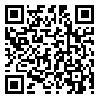BibTeX | RIS | EndNote | Medlars | ProCite | Reference Manager | RefWorks
Send citation to:
URL: http://sjsph.tums.ac.ir/article-1-5479-en.html
2- Ph.D. Student, Department of Climatology, School of Literature and Humanities, Tarbiat Modares University, Tehran, Iran ,
3- Ph.D. Student, Department of Climatology, School of Literature and Humanities, Lorestan University, Khoramabad, Iran
4- MSc. Department of Climatology, School of Literature and Humanities, Zahedan University, Zahedan, Iran
Background and Aims: Cutaneous leishmaniosis (CL) is a neglected tropical vector-borne disease. As other vector-transmitted diseases, its transmission is sensitive to the physical environment. The purpose of this study was to investigate the relationship between El Niño-Southern Oscillation (ENSO) and annual incidence of CL in Iran.
Materials and Methods: The data of ENSO were obtained from the National Oceanic and Atmospheric Administration (NOAA) Climate Prediction Center for the period 1977-2011(34 years), and the annual data on CL incidence in Iran from WHO. To determine the association between the ENSO annual fluctuations and annual CL incidence we used crosstab analysis and tow-tailed independent t-test to find any possible differences among the annual CL incidence according to different phases of the Southern Oscillation Index (SOI: El Niño, warming phase; La Niña, cooling phase; neutral phase).
Results: Analysis of the data showed that, as compared with the years when El Niño and La Niña were dominant, the annual incidence of CL in Iran was lower in the years when neutral phases of SOI were dominant. The highest incidence was found to have occurred during the years with an intermediate La Niña dominance. During the years when La Nina was dominant the incidence of CL was, on the average, 15-20% higher than that in the years with a neutral phase, while the difference between the annual CL incidence in neutral years and El Niño years was not statistically significant.
Conclusion: The findings reveal that in general the mean incidence of cutaneous leishmaniosis during the years with a neutral ENSO index is lower than that during the years with dominant El Nino or La Nina, although there is no difference between incidence in the neutral years and the El Nino-dominant years.
Received: 2017/06/14 | Accepted: 2017/06/14 | Published: 2017/06/14
| Rights and permissions | |
 |
This work is licensed under a Creative Commons Attribution-NonCommercial 4.0 International License. |





